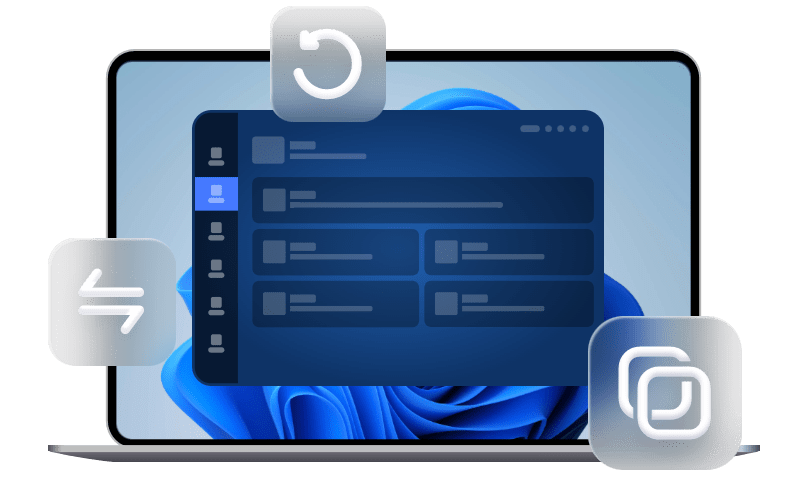How to Fix AOL Outlook Not Working to Get Back to Business
Experiencing issues with Outlook mailbox cleanup? To help users to troubleshoot Outlook Mailbox cleanup not working, Explore the causes behind this problem. This article provides a thorough guide on how to troubleshoot and resolve these issues with practical solutions and tips.
Common Causes of Outlook Mailbox Cleanup Failure
Struggling with Outlook mailbox cleanup issues can be frustrating, especially when features like deleting old emails or auto-archive aren’t working. These problems can disrupt productivity and hinder effective email management. This article will guide you through common causes and solutions to help resolve these issues and optimize your Outlook experience.
Outlook’s mailbox cleanup feature is essential for keeping your inbox tidy. However, when it doesn't work as expected, it can cause inefficiencies. Here, we’ll explain why these issues happen and provide practical steps to resolve them.
🚩Corrupted Data Files: Damaged PST or OST files can interfere with the cleanup process, preventing it from completing.
🚩Lack of System Resources: Low disk space or memory can prevent cleanup tasks from running, leading to errors or failures.
🚩Overcrowded Mailbox: A full inbox with too many emails, attachments, or folders can overwhelm the cleanup tool, causing it to stop working.
🚩Outdated Outlook Version: Using an old version of Outlook can cause compatibility issues, preventing the cleanup tool from functioning properly.
By addressing these underlying causes, users can effectively troubleshoot Outlook mailbox cleanup issues and restore its functionality to streamline email management tasks.
Resolving Outlook Mailbox Cleanup Not Working
Discover step-by-step solutions to resolve issues with Outlook mailbox cleanup that are not working and streamline your email management process.
👉 Bonus: Professional Outlook Email Auto Backup and Cleanup Software
Method 1: Update Outlook to the Latest Version
Before anything else, you should check to see if you are using the latest version of Outlook. Updating Outlook ensures compatibility with the latest features and fixes, enhancing overall performance and stability.
In the meantime, you should know that the update process may take some time, and users may need to restart Outlook, temporarily interrupting workflow.
1. Open Outlook: Launch the Outlook application on your computer.
2. Navigate to File: Click on the "File" tab in the Outlook window's top-left corner.
3. Check for Updates: Select "Office Account" from the left-hand menu, then click on "Update Options" followed by "Update Now" to check for and install any available updates.
4. Follow Installation Instructions: If updates are found, follow the on-screen instructions to download and install them.
5. Restart Outlook: Once the updates are installed, restart Outlook to apply the changes.
Method 2: Review Mailbox Cleanup Settings
Incorrect or outdated settings can often lead to issues with mailbox cleanup functionality. Follow these steps to review and adjust your mailbox cleanup settings:
1. Open Mailbox Cleanup: In Outlook, click the "File" tab at the top left, then select "Options" from the menu.
2. Access AutoArchive Settings: Go to the "Advanced" tab, scroll to "Outlook start and exit," and click on "AutoArchive Settings..."
3. Review AutoArchive Settings: Make sure "Run AutoArchive every" is enabled and set to your preferred frequency. Check where archived items are saved and adjust if needed.
4. Adjust Cleanup Options: Go back to the "Mail" tab in Outlook Options and click "Mailbox Cleanup..."
5. Review Cleanup Tools: In the Mailbox Cleanup window, check options like deleting old items, emptying the Deleted Items folder, and checking mailbox size. Adjust these settings to improve cleanup efficiency.
Method 3: Clear Cache and Temporary Files
Clearing cache and temporary files can help resolve issues with Outlook mailbox cleanup. Follow these steps to clear the cache and temporary files:
1. Close Outlook: Ensure that Outlook is closed to prevent any conflicts.
2. Access File Explorer: Open File Explorer on your computer.
3. Navigate to Temporary Files: Go to the location where temporary files are stored. Typically, this is in the "Temp" folder within your user directory. You can also access it by typing "%temp%" in the Windows search bar.
4. Select All Files: Press "Ctrl + A" to select all files in the temporary folder.
5. Delete Selected Files: Right-click on the selected files and choose "Delete" from the context menu.
6. Empty Recycle Bin: After deleting the temporary files, empty the Recycle Bin to permanently remove them from your system.
Method 4: Repair Outlook Data Files
Repairing Outlook data files can help fix issues related to mailbox cleanup. Follow these steps to repair Outlook data files:
1. Close Outlook: Ensure Outlook is closed to prevent conflicts during the repair.
2. Access Control Panel: Open the Control Panel from the Start menu.
3. Navigate to Mail Settings: Locate and access the "Mail" settings within the Control Panel.
4. Select Data Files: In the Mail Setup dialog box, select the Outlook data file (PST) you wish to repair.
5. Initiate Repair: Click on "Settings" and choose the "Repair" option to start the repair process.
6. Follow Repair Wizard: Proceed through the Repair Wizard prompts to scan and fix errors in the Outlook data file.
By following these simplified steps, you can effectively repair Outlook data files and resolve mailbox cleanup issues. Of course, you can always try to fix this problem by reinstalling MS Outlook or changing your computer system. You can choose to clone the system to quickly meet the needs.
Bonus: Professional Outlook Email Auto Backup and Cleanup Software
To complement the email cleanup tips above, we recommend using a professional tool for automatic email backup and cleanup, such as AOMEI Backupper Professional.
AOMEI Backupper Professional offers a reliable way to back up your Outlook emails. By logging into your Outlook account, you can easily automate regular backups and cleanups. This software allows you to back up all your Outlook data with just a few clicks. You can also customize backups, choosing from full, incremental backup, and differential backups to suit your needs.
► Simple to Use: A user-friendly interface makes data backup easy and quick.
► Varied Backup Options: In addition to email backups, you can use system backup, disk backup, file backup, partition backup, and cloud backup, fulfilling diverse data backup needs.
► Wide Compatibility: It works with various storage devices like external hard drives, USB drives, SSDs, and SD cards.
► Works on All Windows Versions: Compatible with Windows 11, 10, 8, 7, and XP.
Download AOMEI Backupper right now and discover the effortless way to automate Outlook backups and cleanups.
1. First, log into your Outlook account. Then, open AOMEI Backupper and go to the Backup section, selecting Outlook Backup.
2. Click on Add Outlook Data and pick the email account and specific mailbox you want to back up. Afterward, click OK to confirm.
3. Next, choose the location where you want to save your Outlook backup files.
4. To set up automatic backups, enable the Schedule Backup option. You can select how often backups should run—Daily, Weekly, Monthly, or based on specific events.
5. After configuring everything, click Start Backup to begin the backup process.
Tips:
To set Mail backup auto-cleanup, use the backup scheme feature. It provides three backup modes and four auto-cleanup options by day/week/month, facilitating efficient storage space management.
FAQs on Outlook Mailbox Cleanup
Q1: Why is my Outlook mailbox cleanup not deleting old emails?
A1: Outlook mailbox cleanup may fail to delete old emails due to various reasons, such as corrupted data files, insufficient system resources, or conflicting settings.
Q2: Is there a limit to the number of emails Outlook mailbox cleanup can delete at once?
A2: The number of emails that Outlook mailbox cleanup can delete at once depends on various factors, including system resources, mailbox size, and configuration settings.
Q3: Will repairing Outlook data files affect my existing emails or folders?
A3: Repairing Outlook data files should not affect your existing emails or folders. However, it's always recommended to back up your data before performing any repair actions.
Conclusion
In conclusion, issues with Outlook mailbox functionality can disrupt email management and reduce productivity. However, by following the solutions provided here, users can quickly fix these problems and restore their Outlook's efficiency. Whether it's updating the software, repairing data files, or disabling conflicting add-ins, there are multiple ways to address mailbox cleanup issues.
For an effective and easy-to-use backup solution, try AOMEI Backupper. This tool offers powerful features for backing up Outlook data and simplifying email management. By using AOMEI Backupper, you can automate email backups and ensure your Outlook runs smoothly. If you need to auto-save Outlook emails to hard drives, give AOMEI Backupper a try—it'll get the job done fast.

